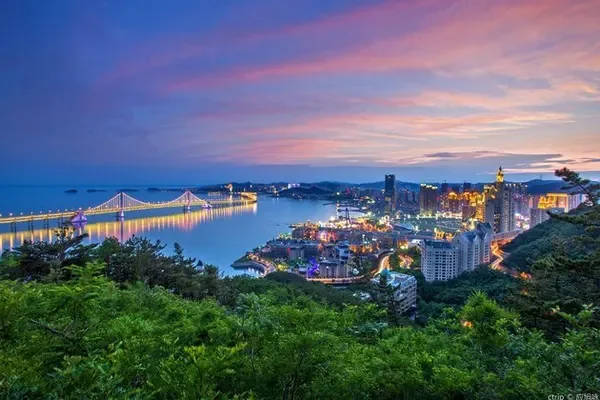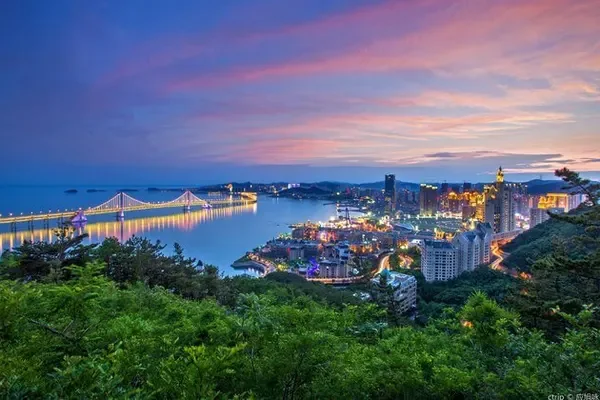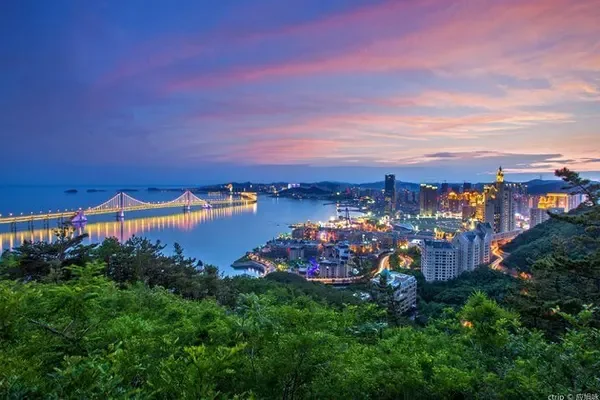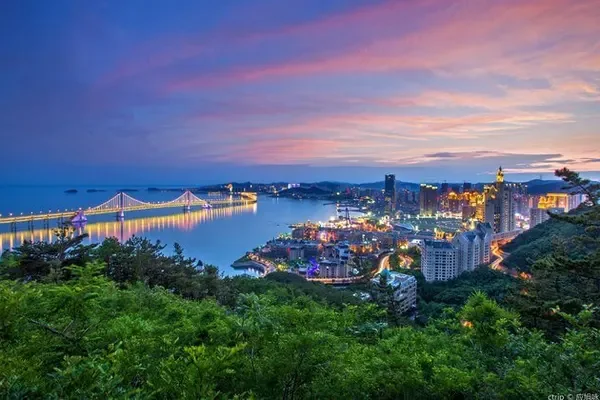foreword
Aunt was born in Xinjiang
Uncle works in Xinjiang
three thousand kilometers away
that place
so far away
so long
When stepping on this hot land
Overlapped
some imagination in mind
It seems
more
unexpected situation
Flame Mountain
I grew up listening to Xinjiang songs since I was a child. I remember that the musicians living in Xinjiang at that time were later known as the king of western singers Wang Luobin. There are many works, such as "In That Faraway Place", "Pick Up Your Hijab", "Dabancheng's "Girl" and other works are familiar to everyone. It can be said that he is the first musician who promotes and spreads Xinjiang to the outside world as a whole. Many young people in the mainland have an overall understanding of Xinjiang through music. It is a very special fate that he is not only an honorary citizen of Turpan City, but also an honorary mayor of Daban City.

The first stop we went to was Huoyan Mountain. As soon as we got out of the car, we felt a burning sensation in the air. The air was extremely dry. Although there was a slight gust of wind from time to time, it could not change the heat wave here at all.
This temperature immediately brought me to the scene in the TV series "Journey to the West" in which Monkey King borrowed a banana fan. Although the Tang monk and his disciples were too hot on TV, the melon-eaters in front of the TV still couldn't empathize. This time it came The flaming mountain finally coincided with the anxiety of memory.

In the underground palace of the Flaming Mountain Scenic Area, there are murals and sculptures that follow the hometown of "Journey to the West" everywhere.

Journey to the West is a mythical novel with a grand chapter, which integrates the three schools of Confucianism, Buddhism and Taoism, and clearly explains the cycle of heaven and the six paths of reincarnation. After seeing the murals of this scene, I think of those years I have seen it over and over again Journey to the West.


When Yuan Yuan was still sitting on the bus, he had already seen Princess Iron Fan's plantain fan. On the ground floor of the scenic spot, several statues were erected, Tang Monk and his disciples, Princess Iron Fan, and the Bull Demon King.

In recent years, the wave of research on Journey to the West has risen. I personally think that Princess Iron Fan will not let Sun Wukong borrow a fan. Because Princess Iron Fan is in this remote Flame Mountain, she can only accept some fire-fighting offerings from the local people. In terms of money She has to rely on the Bull Demon King's Xinhuan Princess Yumian, so Princess Iron Fan has encountered setbacks in money and emotions, and she still looks forward to the Bull Demon King returning to her embrace, so it is reasonable not to borrow the fan, and later Zhu Bajie killed Princess Yumian, and the biggest crisis that Princess Iron Fan encountered was resolved, so there was a borrowed fan later.

No matter where he is, the image of Bajie is the most down-to-earth. I have seen this envoy enshrined in temples in the Bashu area. It is not difficult to see that people love him. Although he is a bit greedy and sensual, he is the most down-to-earth , it is said that young girls also find Bajie interesting. As a super soldier, Monkey King likes all cool boys.

When I saw the donkey and the cart, I thought of the song "Girl in Dabancheng", "Bring your dowry, bring your sister", and I felt festive.

The girls chatting and taking photos in the scenic area are waving from a distance.

Golden cudgel stick (thermometer in the Flame Mountain Scenic Area, Turpan, Xinjiang), once won the Guinness World Best. The giant thermometer has a diameter of 0.65 meters, a height of 12 meters, and a temperature display height of 5.4 meters. It can actually measure the surface temperature and air temperature within 100 degrees Celsius, and the error does not exceed plus or minus 0.5 degrees.

Joyful girls dance hotly in front of the golden cudgel.

Kumtag Desert
This is probably the desert closest to the city, less than ten minutes' drive from Shanshan County, Turpan City. But they are harmoniously accompanied by Shanshan County, each waiting for a side of the scenery.

Being in the central region, the number of times we can see the sea and desert is one of the few. All we have are endless mountains and endless plains. Stepping on the sand with bare feet, feeling the delicate texture of the sand, facing the scorching sun, blowing the breeze, or driving in a desert vehicle, or walking, you can feel it quietly in the desert.

Although this is the desert closest to the city, it is a desert after all. You can't see the border of the desert. The desert car drives all the way to the no-man's land. When you can't see the tourists, you can still feel a little desolate.

Passers-by hiking in the desert include adults, children, lovers, and ladies floating in the wind.

The children roared all the way, headed to the high place of the desert regardless of their care, and then slid down with a skateboard, going back and forth several times and still couldn't get tired of it.

A couple with coffee in a thermos is definitely a model of a refined life. In admiration, just like the heroes and heroines in Hong Kong movies meeting to watch the sunrise, love is not always passionate, but it must always be romantic.

The young lady who remained elegant in the wind walked calmly in the desert with her shoes in one hand and her bare feet.

Scenic sightseeing car

Domineering shape of desert car

desert and city separated by trees

In the Tang Dynasty, the Kumtag Desert was called "Great Trouble with Ghosts and Demons". Because the road was difficult and dangerous, merchants and passers-by regarded it as a devil's journey. But now, the desert has become a good place for many tourists to come to experience the desert.
Jiaohe Ancient City | Karez
The ancient city of Jiaohe, the capital of "Cheshi Qianguo", one of the 36 countries in the Western Regions, was also the seat of Anxi Duhufu, the highest military and political institution in the Western Regions in the Tang Dynasty.

Walking in the scenic area, it is basically a piece of ruins, only a few are still relatively intact, but all the wooden structures have been burned, leaving only walls made of raw soil.

Although it is thousands of miles away, the layout of Jiaohe Ancient City is still built after the layout of Chang'an. In the city, the city's wells, government offices, Buddhist temples, pagodas, streets and alleys, as well as workshops, folk houses, military training grounds, Tibetan soldiers, etc. Clay Bodhisattvas can still be found in trenches and Buddhist niches in temples. These all show that the ruler of the ancient city of Jiaohe is not just Yelang arrogant, but has a heart for the heavenly kingdom.

However, with the passage of time, the religious war launched by the Mongolian nobleman Borjijin Haidu in the Yuan Dynasty completely disappeared in the long river of history under the double blow of force and spirit.

"Hanshu Biography of the Western Regions" records: "The former state of Cheshi, Wang Zhijiaohe City, the river flows around the city, so it is named Jiaohe. There are more than 1,300 house ruins, 53 Buddhist temple ruins, 316 ancient wells, and the main road of the street. 1900 meters, 34 roadways.

More than 2,300 years ago, on a loess platform with ravines and ravines, a city was dug into the ground by the ancestors of Jiaohe inch by inch. Its establishment has become a bridge of cultural exchange on the ancient Silk Road.

More than two thousand years ago, five or six hundred households, seven or eight thousand car masters, where did they go? In the most perfect ruins in the world, follow the deep plank road to pursue, maybe you can find the answer you want...

Although walking in the old city is a bit hot and breathless, there are still some shaded places to hide from. The houses made of raw soil are warm in winter and cool in summer, and you can use local materials, which are easy to construct and save energy. Blending into nature is conducive to environmental protection and ecological balance. Therefore, this ancient building type is still alive today.

What is amazing is that in this maze-like ancient city of Jiaohe, there is no brick or tile. The whole city was dug out bit by bit, which is indeed a great project.

Even now, two thousand years later, one can still see the magnificence and momentum of this complex, which is higher than the surrounding area. In recent years, marathons and cycling competitions have also been held here.

Karez, I have waited too many years to understand from the book to the show. Xinjiang's unique underground water conservancy project, together with the Great Wall and the Grand Canal, is known as the three major projects in ancient China. Its structure consists of four parts: shaft, culvert, open channel, and dam (reservoir). Karez wells are like pearls inlaid on the land of Xinjiang, lined up from high to low, criss-crossing, dense like cobwebs, extending forward, leading the groundwater leaked from the melting snow and rainwater of Tianshan Mountains. A settlement village.

In Xinjiang, where it doesn't rain very much, relying on such Karez wells one after another, the local people can drink water, and they don't even lack water.
Bosten Lake
Bosten Lake is the largest inland freshwater lake in my country, with an area of 600,000 mu of reed wetland around the lake, and an annual reed reserve of more than 200,000 tons. It is one of the four major reed areas in the country. There are abundant fishery resources in the lake, where 33 species of fish grow, and it is the largest fishery production base in Xinjiang and even in Northwest China.

In winter, egrets and herons dance together, their graceful figures contrasting with the golden 10,000 mu of reeds, and their singing wakes up the village by the lake.

After the cold dew, the Bosten Lake Wetland in Xinjiang presents colorful scenery, entering the best period for viewing reeds.

The ecology of Bosten Lake is very good. It not only provides a habitat for various fishery resources, but also provides a habitat for many migratory birds and other terrestrial protected animals.

Most of the construction in the scenic area is made of reed and bamboo pavilions, which is also to provide a better habitat for animals in the Bosten Lake wetland.

This is a place to witness happiness and joy. Bosten Lake once welcomed 30 golden and silver wedding couples from all over Xinjiang to celebrate their golden and silver weddings.

Against the backdrop of the clear water and blue sky, the golden reeds stretch as far as the eye can see, the reed flowers sway with the wind, the water birds fly up and down, and the speedboat slides across the water, just like a picture of a water town in the south of the Yangtze River.

Bohu is also known as Xinjiang's "Hawaii" by the outside world.

According to legend, Tang Seng was blocked by the Liusha River not far from Bohu Lake when he was going to the West to learn Buddhist scriptures. The third prince of the Dragon King of the West Sea was moved by Tang Seng and others' insistence on taking back the scriptures, so he was enlightened by Guanyin Bodhisattva and turned into a white horse, carrying Tang Seng and his party on his back, and crossed the Liusha River safely. Here it fits with Journey to the West again, which shows that Xinjiang is a realistic reflection of the geographic location in Journey to the West.


Summer is the busiest time here, and the large-scale fishing scene is very spectacular.


Beautiful scenic spot guide

couples and singles

Bayingolengzhou Museum

Bayingolengzhou (Bazhou for short), among the 36 countries in the Western Regions in the Han Dynasty, 11 countries including Ruoqiang, Qiemo, Xiaowan, Shanguo, Wulei, Luntou, Quli, Yanqi, and Weixu were in its territory.

The Bazhou Museum has a large number of cultural relics from the homeland of the Western Regions since the Han Dynasty, and also has a large number of historical remains that testify to the frontiers of the motherland and traces of activities.

There are ten museums in Bazhou, and the collection scale is the largest in Bazhou Museum.

The Bazhou Museum takes the Loulan Pagoda as the main body of design, and the Mongolian Vajra Relic Pagoda as the building base. It is a metaphor that the building is looking for and contemplating the ancient Loulan culture, and the thousand-year-old historical civilization will be reproduced here.

Because there is not only the mysterious Loulan culture, but also the history and culture of many ethnic minorities, which requires a lot of knowledge accumulation to take a good tour.

However, I still remember the feat of the Mongolian Turghut’s return to the east from history books. During the Qianlong period, the Turghut tribe returned from Tsarist Russia to the Qing Dynasty, and returned to the land they once lived in. A place to live.



The exhibition of Zhahongluke ancient corpses in Qiemo County displays 3 ancient corpses dating back more than 3,000 years.

Yanqi red wine
East longitude 86°, north latitude 42°. This latitude and longitude setting is a "golden zone" for grape growing. In the map, all the temperature, humidity and soil suitable for the growth of wine grapes are firmly locked here. Grapes and wine, here, naturally "grow" a series of possibilities.

The wines made from grapes grown on the Yanqi Gobi Desert have successively won the silver medal of the 2015 Brussels Wine Competition, the gold medal of the 5th China International Organic Food Expo and BioFach China 2011, the silver medal of the 2015 London Decanter World Wine Competition, and the IWSC Silver Medal of the International Wine and Spirits Competition, Gold Medal of the 2015 RVF China Excellent Wine Awards, Silver Medal of the 2016 Belgian Brussels International Wine Competition, Bronze Medal of the 2016 British Decanter World Wine Competition, etc.

At the foot of Huola Mountain in Yanqi County, after a short drive, you will find wineries with different characteristics in the shade of green trees. Unlike traditional factory-style winemaking enterprises, the current wineries are more like medieval wineries. Manor, castle-like exterior with antique interiors.

The light and heat resources, temperature difference, and climate in Yanqi County can grow high-quality grapes. The awards it has won at home and abroad are actually the recognition of the entire Yanqi production area by some experts in the world and in the industry.

Adjacent to Bosten Lake in the south, the surface of the lake evaporates and the waves shine back, forming a unique microclimate. It is extremely beneficial to the growth of grapes, greatly improves the quality of grapes, and can produce high-end and high-quality wines.



The Marselan grape, which is rarely cultivated in the world, has produced very good results here-the wine made from Marselan has a deep color, rich fruit aroma, aromas of mint, lychee, and green pepper, and a light-bodied wine. The tannins are fine and soft on the palate.

After the sommelier picks a good bottle of wine, and after a process of sobering up, in the afternoon, quietly enjoy the taste brought by the tannins in the wine.

Korla Fragrant Pear
Chapter 24 of "Journey to the West" states that there are ginseng fruits in Wuzhuang Temple of Longevity Mountain. This fruit is also called Caohuandan. The prototype of the ginseng fruit "entering the soil" refers to the Korla fragrant pear. Because the skin of the fragrant pear is thin and the water is full of no residue, it shatters into juice when it falls to the ground. When it comes to food, Journey to the West is also inseparable. It really is fate.

In the field, we learned that there are male and female pears in Korla. The tail of pears is sunken, forming a round dimple shape; the tail of male pears is convex, forming a protruding shape, with thick meat and large core. But regardless of male or female, as long as it is from Korla, it must be delicious. It's not that the female's tastes better than the male's, it's just a gimmick on the Internet.

"Xijing Miscellaneous Notes" written by Ge Hong in the Jin Dynasty records: "The pears in the vast sea come from the north of the vast sea, and they are cold-resistant and never dry." The "Hanhai" here refers to the Tarim Basin, and the "pear" refers to the Korla pear.

"Grapes from Turpan, melons from Shanshan, and fragrant pears from Korla have no dregs." Korla fragrant pears are known as "Pearls" because of their pleasing color, rich aroma, thin skin and fine meat, juicy and less dregs, durable storage, and instant melting in the mouth. "Treasures among pears" are well-known both at home and abroad.


All the water for irrigating the pear orchard comes from the rivers formed by the melting of snow in Tianshan Mountains. "Drinking" such pure and pollution-free snow water every day, coupled with abundant sunshine, endows Korla pears with high sugar content and rich nutrition.

With the opening of the Jingdong Korla Pavilion this year, the fragrant pears from Korla’s origin can be directly supplied to inland cities in a more efficient and fresh way, such as Beijing, Zhengzhou, Wuhan, Shanghai, Guangzhou and other big cities. Let consumers eat authentic and assured Korla pears.


Taoyuan Restaurant
A special restaurant I ate on the road, 150 meters north of the town government on Hongqi Road, Senior Town, where parking is available at the entrance and in the park. Mixed noodles, hand pilaf, braised pot lamb, pepper chicken, etc. are all eaten in this restaurant, and I ate three meals here in two consecutive days.

The restaurant is quite big, with dozens of private rooms, booths and scattered tables in the lobby, each table can accommodate a dozen people.

I saw a sign of a star-rated farmhouse, which is a four-star farmhouse in the autonomous region. In the restaurant garden, chickens, ducks and geese are also raised, and vegetables are grown. Basically, they can be self-sufficient and eat fresh and organic vegetables.

turkey

Stewed mutton is a unique method of Taoyuan Restaurant. It also won the first prize in the Bazhou Cooking Skills Competition. Through the unique method of stewed pot, the mutton is stewed under high temperature to quickly lock the juice and keep it fresh. taste.

Pepper Chicken is a signature dish in Xinjiang that is as famous as Dapan Chicken. Free-range chicken is used, marinated with special seasoning and then boiled. Torn apart by hand before eating, served with the secret chili pepper soup and various ingredients is a standard chili sesame chicken. The chicken tastes fresh and chewy, coupled with the spicy seasoning, the mouth is full of spicy, soft and tender, it is really a kind of "gentleness" with special feeling. Eating pepper chicken, drinking Wusu beer, praise praise.

It looks fresh in color and tastes like drooling.

The portion of the pilaf is too big, the first meal is really hard work and not talking, just teeth, almost eating up to the throat.

Of course, the most important thing to introduce is this red willow barbecue. Fresh red willow branches are roasted under a certain heat. The secreted red willow juice can not only remove certain mutton smell, but also the special fragrance of red willow will penetrate into the meat. , Just think about the taste.

Xi Yu Notes
During the formation of this Xinjiang itinerary, in addition to experiencing the honey-seeking Xinjiang of Xi Yu Ji, there are more feelings. For example, the Kongque River in the urban area of Korla, in the city of Xinjiang, can actually cruise the city center at night by boat. The moment I stepped on the cruise ship, my thoughts drifted to the feeling of Venice Water City.

Marching to the middle of the lake, we also saw the musical waterfall, which was very exciting.

In the fruit banquet in Turpan, we not only ate a lot of fruits, but also a wonderful song and dance waiting for us.


A male tourist, a beautiful woman dancing with a snake, witty and courageous.

I also ran into a local Uighur wedding at night, which was simple yet grand, and the dancing dance was the best blessing for this wedding.


If I have a chance, I hope to come again next time and continue to experience more places related to Xinjiang in "Journey to the West".



